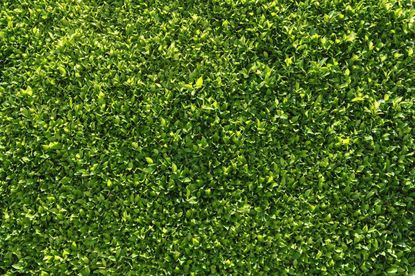Zone 8 Shrubs For Hedges: Choosing Zone 8 Hedge Plants


Hedges serve many useful purposes in a garden and backyard. Border hedges mark your property lines, while privacy hedges protect your yard from prying eyes. Hedges can also serve as wind blocks or hide unsightly areas. If you live in zone 8, you may be looking for zone 8 shrubs for hedges. You’ll have quite a few choices. Read on for tips on growing hedges in zone 8, as well as ideas for zone 8 hedge plants that are suitable for whatever purpose you’re hoping to achieve.
Choosing Hedge Plants for Zone 8
In USDA plant hardiness zone 8, winter temperatures dip to 10 to 20 degrees F. (-12 to -7 C.). You’ll want to pick zone 8 hedge plants that thrive in that temperature range. You’ll have so many hedge plants for zone 8 to choose among that you’ll have to narrow it down before going shopping. One big consideration is height. Hedge plants for zone 8 range from sky-scraping arborvitae to ornamental flowering bushes that are knee high or less. The purpose of your hedge will dictate the height you need. For a privacy hedge, the plants will need to grow at least to 6 feet (2 m.) tall. For windbreaks, you’ll need an even higher hedge. If you’re just trying to mark your property line, you can consider shorter, prettier plants.
Zone 8 Hedge Plants
Once you have narrowed down the specifications for your hedge, it’s time to look over the candidates. One popular hedge plant is boxwood (Buxus selections). Since boxwood tolerates shearing and shaping, it is often used to create clipped hedges or even geometric forms. Varieties grow to 20 feet (6 m.) tall in zones 5 through 9. If you’d like something with showy flowers, check out glossy abelia (Abelia x grandiflora). If you are growing hedges in zone 8 with this shrub, you’ll enjoy dangling trumpet-shaped blossoms all summer long. The shiny leaves are evergreen and grow to 6 feet (2 m.) tall in zones 6 through 9. Japanese barberry is great for a defensive hedge with its sharp spines creating an almost impenetrable barrier on this 6 foot tall (2 m.) shrub. Some varieties have foliage in shades of chartreuse, burgundy, and rosy red. The shrubs are deciduous, and many give you a fall show as well. If you want a spined shrub but prefer something taller, flowering quince (Chaenomeles spp.) plants work well as zone 8 shrubs for hedges. These grow to 10 feet (3 m.) tall and offer crimson or white flowers in spring. Sawara false cypress (Chamaecyparis pisifera) is even taller than quince, maturing over the years to 20 feet (6 m.). It is also called threadleaf false cypress because of its delicate needles, an evergreen that grows slowly and lives long in zones 5 through 9.
Gardening tips, videos, info and more delivered right to your inbox!
Sign up for the Gardening Know How newsletter today and receive a free download of our most popular eBook "How to Grow Delicious Tomatoes."

Teo Spengler has been gardening for 30 years. She is a docent at the San Francisco Botanical Garden. Her passion is trees, 250 of which she has planted on her land in France.